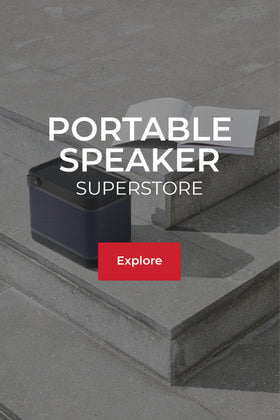
EXPLAINED: SDR, HLG, HDR, HDR10, HLG & DOLBY VISION
Every Display system or panel has two primary qualities that make up the quality of the panel or system. These primary qualities are Brightness and Contrast Ratio. While Brightness is fairly simple to understand, Contrast Ratio is a little more complex. Contrast Ratio is defined as the ratio of the luminance of the brightest shade (white) to that of the darkest shade (black) that the system is capable of producing. The Contrast Ratio of a television or projector would be characterised by the number of colours/colour gamut that can be achieved by the device.
The oldest of the Contrast Ratios is Standard Dynamic Range(SDR). SDR came to the forefront during the era of the Cathode Ray Tube(CRT). CRT televisions were far inferior to current generation LCD, Plasma LED televisions with respect to the colours they could produce and the brightness they could achieve. Compared to the other Contrast Ratios, SDR supports 8 bit colour depth and hence the least number of colours and the Rec.709 colour space. This decreases picture quality and hence is inferior compared to the other Contrast Ratios available.
High Dynamic Range(HDR) being the successor of SDR, came to the forefront with the advent of LCD televisions as they supported more colours and a higher brightness. HDR is also commonly referred to as HDR10 as it supports 10 bit colour depth and hence can produce more colours compared to SDR. HDR10 also supports the REC.2020 colour space. HDR10 supported devices are also meant to support upto 4000 nits of peak brightness. HDR10 was later succeeded by HDR10+ which is a royalty-free dynamic metadata platform created by 20th Century Fox, Panasonic and Samsung. The primary difference between HDR10 and HDR10+ is the dynamic tone mapping curve that changes for every scene in the movie which is available with HDR10+. HDR10 only supports static tone mapping that sets the tone for the entire movie.
Dolby Vision is a proprietary standard Contrast Ratio that is owned by Dolby Laboratories. Devices that support Dolby Vision need to support the same REC.2020 colour space as HDR10 but also be able to process a 12 bit colour depth. These devices also need to support a peak brightness of 10,000 nits. Since Dolby Vision is proprietary, each device manufactured that is Dolby Vision certified will have a royalty to be paid to Dolby Laboratories. The primary characteristic of Dolby Vision that makes it better is that it supports metadata processing which allows content creators to have greater control over colours, lighting and all other aspects of each shot individually.
Hybrid Log-Gamma(HLG) is a form of HDR that is more attuned to cable tv, satellite tv and live tv. Devices that support HLG are to be able to process 10 bit colour depth. While all the other formats discussed till now except SDR have predominantly been used for streaming services such as Netflix, Prime Video, etc., HLG is meant to increase the picture quality, dynamic range and colour space of broadcast media. Since HLG is meant to be used in broadcast media, it is also backwards compatible with SDR displays. HLG can be thought of as a complement to HDR, HDR10, etc.




